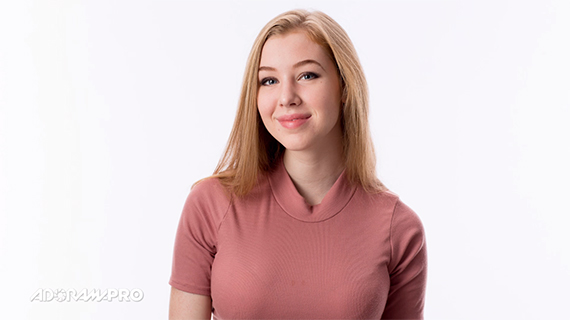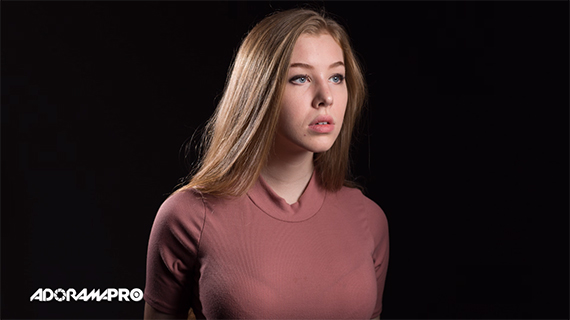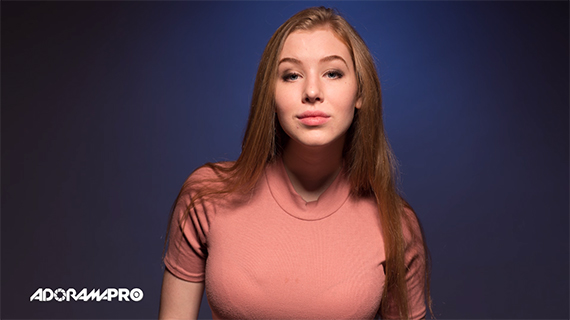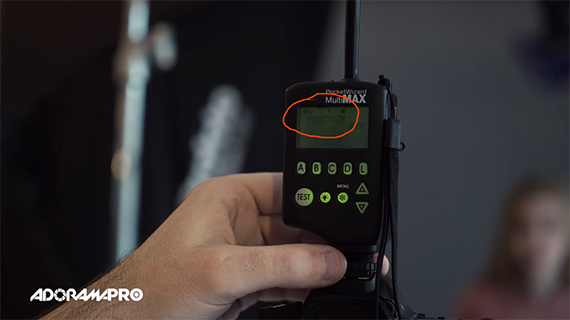Imagine you have to photograph a team of football players or a group of very busy corporate executives and you’re given less than half an hour. Sound impossible? Well, let’s make the challenge even more difficult. Let’s make it three different shots with three different lighting setups. Sound ridiculous? Wait until you watch this trick by Daniel Norton:
Norton sets up three lighting scenarios for this demonstration:
1. Crisp
Two V Flats are set up behind the model: black on the outside and white on the inside. They cover any light spilling out from the Acute heads set up immediately behind them. These heads are connected to Acute 2400 WS power packs. The light bounces off to the medium gray background. Norton overexposes the background by about 2.5 stops to make it pure white. The Acute heads also produce a bit of rim light around the model’s head and shoulders. The key light is a gridded softbox placed a little more centered than usual. This creates fewer shadows across the face.

Classic white background portrait lighting
2. Moody
In this scenario, the background lights won’t fire, making the medium gray background appear completely black in the shot. The key light is a beauty dish with a 25 degree grid fired from camera right. There is another B2 head fired from the opposite side, also with a 20 degree grid, separating the model from the background. The model is turned toward the key light to avoid too much shadow.

Moody portrait lighting
3. Warm Cool
A floating head is set up directly above the model, attached to a boom stand and gelled with a blue gel. A Profoto Magnum reflector, gelled with a CTO gel, is set up directly above the camera. This produces a slightly warm light illuminating the face. The blue light spills somewhat, creating a slightly contrasting blue background merging into gray.

A combination of warm CTO and blue gels creates this “warm cool” effect
Controlling the Lights
To set up the three lights so that he can control them separately and as a group, Norton uses the channels on his PocketWizard. He meters each lighting setup in advance using a light meter so that each one is giving him the same exposure. He shoots at f/5.6 so that’s the starting point. This way he doesn’t have to touch the camera settings between each shot.

The speedcycler feature on his Multimax allows him to cycle between each lighting setup instantly.
Plus, his PocketWizard Multimax allows him to cycle between each of the channels one after the other using his camera’s burst mode.
In less than three seconds, he can have three completely different portrait shots.
For Further Training, Offer Ending Soon:
Natural light is beautiful, but it doesn’t always cooperate. That’s why it’s important for photographers to understand how and when flash lighting can be beneficial. And if you don’t know where to begin, reading Ed Verosky’s Guide to Flash Photography is a good starting point. It covers everything from choosing a flash to how light works to setting up classic lighting patterns. We have a special reader deal on it this month.
Learn more here: Guide to Flash Photography at 75% Off
Go to full article: How to Capture Multiple Portrait Styles Quickly in Studio
What are your thoughts on this article? Join the discussion on Facebook
Article from: PictureCorrect